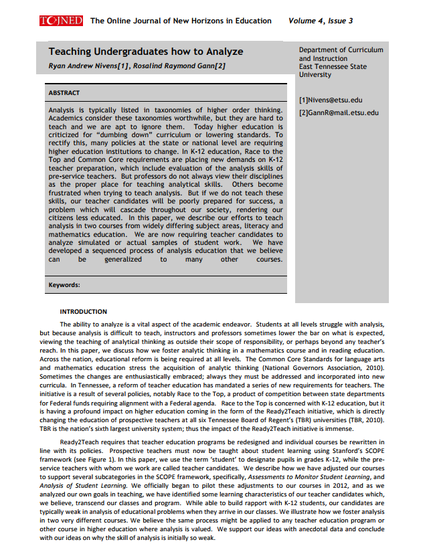
Analysis is typically listed in taxonomies of higher order thinking. Academics consider these taxonomies worthwhile, but they are hard to teach and we are apt to ignore them. Today higher education is criticized for “dumbing down” curriculum or lowering standards. To rectify this, many policies at the state or national level are requiring higher education institutions to change. In K-12 education, Race to the Top and Common Core requirements are placing new demands on K-12 teacher preparation, which include evaluation of the analysis skills of pre-service teachers. But professors do not always view their disciplines as the proper place for teaching analytical skills. Others become frustrated when trying to teach analysis. But if we do not teach these skills, our teacher candidates will be poorly prepared for success, a problem which will cascade throughout our society, rendering our citizens less educated. In this paper, we describe our efforts to teach analysis in two courses from widely differing subject areas, literacy and mathematics education. We are now requiring teacher candidates to analyze simulated or actual samples of student work. We have developed a sequenced process of analysis education that we believe can be generalized to many other courses
Available at: http://works.bepress.com/ryan-nivens/39/

Copyright © The Online Journal of New Horizons in Education. This document was published with permission from the publisher. It was originally published in The Online Journal of New Horizons in Education.